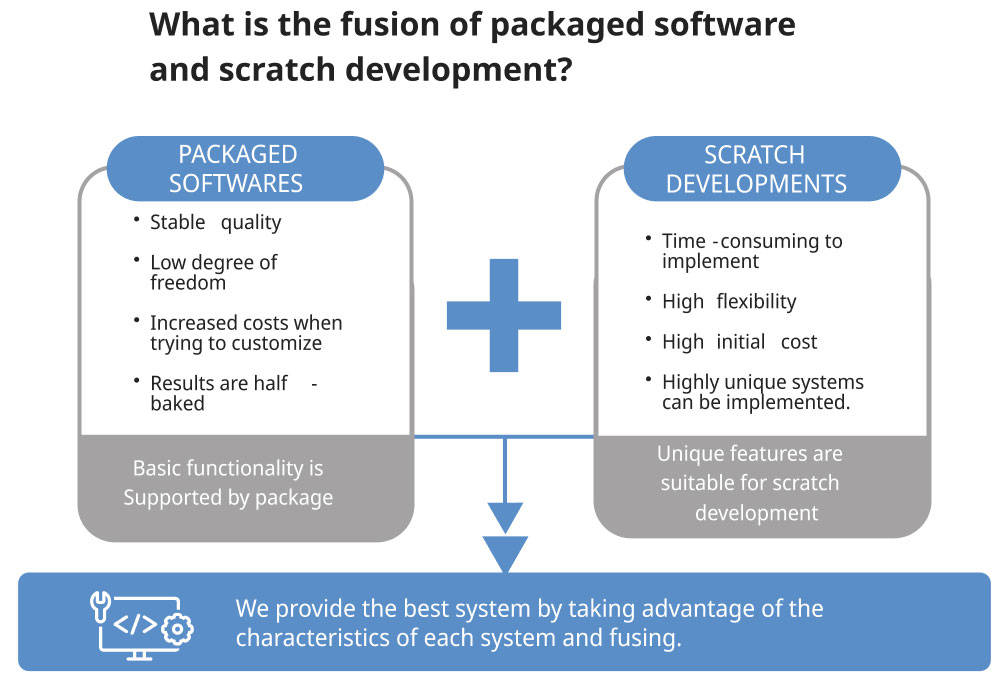Core system Development – Retail/Production/Wholesale
- Home
- portfolio
- Development
- Systems
- Core system Development – Retail/Production/Wholesale

Our approach to replacing core systems in the retail industry
What is the role of core systems in the retail industry and what is our company's basic philosophy?
1. The role of core systems in the retail industry
When supported by packaged software
Combination of in-house scratch development and packaged software
What we recommend is to build highly unique areas for your company using scratch development, support general areas with packaged software, and link the two. The aim is to leverage the characteristics of both companies and create synergistic effects.

2. The need for scratch development of core systems in the retail industry
Logistics optimization
Optimization of product information management work flow
Real-time management of plans and actuals
Responding to aging
Our philosophy is that there is a big gap between the system life cycle and the sense of speed required by business/operations, and that software should not be completely updated to update hardware. We believe that it should be a foundation that can be constantly revised according to the current situation.
If there is a deadline due to obsolete hardware, we recommend first transferring the system to the cloud, and then replacing the entire system with a solid plan in the next step.
Utilization of new technologies such as AI
3 . Our approach to building core systems
Here’s our approach to ensuring success:
Don't release everything with a big bang
At that time, problems are more likely to occur in cases where the system is new and the way business is performed has changed significantly.
Our recommendation is that even if you have an evolutionary vision, it is better to focus your initial release on areas that are already being implemented in the first step, and then implement the developmental issues in the next step. We think it’s smooth. We work with our customers to create an appropriate roadmap depending on the scale of system development.
Building an optimal system architecture
By constructing an optimal system architecture, we can expect to reduce infrastructure costs and increase development/operation productivity, so we will conduct a thorough study.
Building a team that works as one with our customers
Step by step development/testing with Scrum development
Constant data validation
Data is the lifeblood of IT systems. Our focus is not on delivering a working program, but on ensuring proper business operations, and from that perspective we place a heavy emphasis on data verification in our projects. By repeating data acquisition, aggregation, output, and comparison with the existing system just like in real life, we can completely eliminate data acquisition omissions and calculation logic errors, and perform operations that are close to parallel operations, allowing us to release with confidence. Create preconditions.